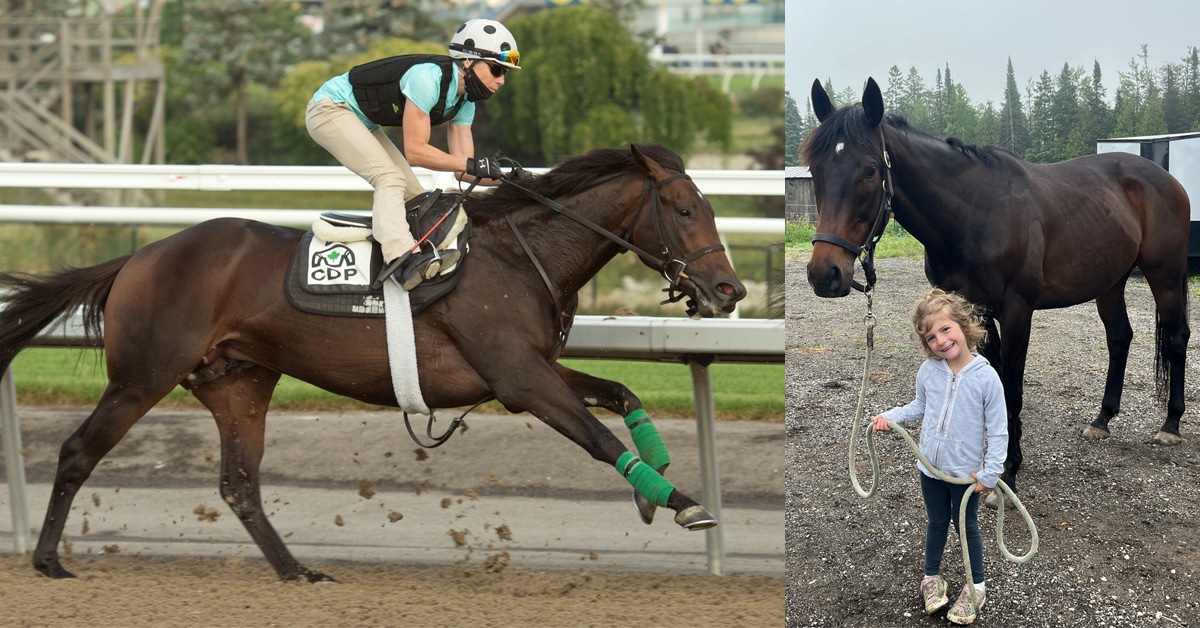Jonathan Zammit grew up in Mississauga, ON aware of the importance of Woodbine Racetrack in the Toronto sports landscape, but when he took a job as the track’s vice-president of thoroughbred racing operations in January of 2017, he had to explain his new career to his parents.
“My parents didn’t understand the allure because I’m first-generation Canadian. They grew up in a country where horse racing wasn’t really a sport for them,” Zammit said. “They understood what Woodbine does and is, but they didn’t understand the depth of the job. They didn’t understand how a (race) card comes together. So, there certainly was some explaining about purses and all that.”
Zammit recently took on more responsibility after long-time race secretary Steve Lym left in December of 2018 to take the same position at Santa Anita racetrack in California.
“Steve was an amazing colleague,” Zammit said. “What I learned from Steve was just the passion he has for horsemen, Woodbine Racetrack and thoroughbred racing in general. Just seeing how he gave 100 per cent every single day for this place and for the horsemen was really inspiring and I saw that very early in my tenure.”
Zammit was a sports fan growing up — “more into the traditional sports: hockey, soccer, the North American sports per se, and a little bit of golf here and there” — and came to Woodbine a few times to see big races such as the Queen’s Plate.
After earning a Bachelor of Commerce from the University of Toronto, his CPA and then an MBA from Queen’s University, Zammit spent three years in the finance department of Maple Leaf Foods before taking a job as director of finance (business analytics) at Maple Leaf Sports and Entertainment (MLSE), the parent company of the Toronto Maple Leafs, Raptors, Argos and Toronto FC. Working out of the corporate offices at MLSE, Zammit rarely had the opportunity to mingle with pro athletes, but one time on a work-related visit to the Raptors’ dressing room he bumped into the NBA team’s 2012 first round draft pick Terrence Ross.
“I was, at first, a deer in the headlights, but he was such a very nice gentlemen and we actually played some darts together while I was waiting for the gentleman from the Raptors to meet with me,” Zammit said. “That is probably my coolest sports story to get to know him a little personally and him taking the time to speak with me and hang out.”
Zammit admits he is not a horse racing lifer, but he believes that can be a strength in terms of crafting Woodbine’s race program.
“I tell the horsemen, ‘I’m here to understand and I like and encourage the feedback.’ I’m not an expert in horse racing and people know that about me. I would be foolish to say that… So, where people want to give me feedback and provide suggestions and provide ideas, I’m willing to listen. I think that’s where some of the best feedback has come from, the horsemen. It’s their program. Trying to appease everybody is a lofty goal and I’m certainly committed to trying.
“There’s a lot of variables. Obviously, the main ones are field size and quality. It’s always the lens we look through. But the big thing for us is we want to see horses run. We want to make sure horses have the opportunity to compete… We can only put so many races on per day. When we have to make those decisions, there’s a lot of factors that go into it. How do we balance quality versus quantity of horses? How do we make sure that horses that haven’t run in awhile are getting the opportunities? We look at the type of races we’re putting on that day and where we’re seeing horses that haven’t had a chance to run, do they have a greater priority that day because they’ve been in the shedrow for awhile? For sure.”
Zammit said he’s excited about Woodbine’s new turf track and the opportunities it will present.
“Our competitive advantage here is turf, so adding that second turf course is going to be really big for us. It’s actually going to allow us to really transform our program, to grow it into something that’s very special for us. That turf track is going to be state-of-the-art in terms of drainage and irrigation. It’s going to a very safe surface. We’re very proud of that and how we integrate that with the E.P. Taylor (turf course) is going to be very, very key to us, because we’re looking to really provide horsemen with a lot of opportunities to get on the turf. We’re going to be carding a lot of turf races and making sure that horsemen that have turf horses have those opportunities… We’re very excited about it and we can’t wait to get on it in the spring.”
Zammit said his background in finance and at the MLSE has helped him immeasurably in his job at Woodbine.
“I was surprised how much I have been relying on my background in finance, specifically around purse management, handle, optimization of our cards and making sure we’re putting the best card on, field size — a lot of quantitative measurements,” Zammit said. “(It has) helped me to flatten out that learning curve a little bit.”
That said, orchestrating a racing program that makes everyone happy isn’t always easy.
“Trying to get a program that works for everybody and helps local people and our visitors and our Ontario Sired breeders and our Ontario Bred horsemen and just making sure everyone’s needs are addressed is the biggest challenge for me,” he said.
It’s a challenge Jonathan Zammit is tackling with gusto.
The Latest










